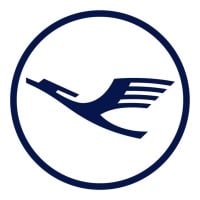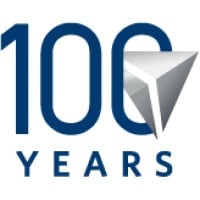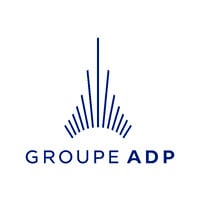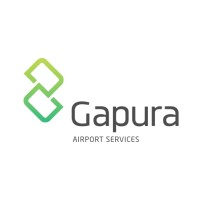Company Cyber Security Posture
NANA
NA Company Details
NA
NA
NA
NA
NA
NA
Scan still pending
NA
NA
Between 200 and 800
This score is AI-generated and less favored by cyber insurers, who prefer the TPRM score.
 NA Global Score
NA Global Score.png)

Company Scoring based on AI Models
| Model Name | Date | Description | Current Score Difference | Score |
|---|---|---|---|---|
| AVERAGE-Industry | 03-12-2025 | This score represents the average cybersecurity rating of companies already scanned within the same industry. It provides a benchmark to compare an individual company's security posture against its industry peers. | N/A | Between 200 and 800 |
Company Cyber Security News & History
| Entity | Type | Severity | Impact | Seen | Url ID | Details | View |
|---|
Company Subsidiaries

NA
Access Data Using Our API

Get company history
.png)
NA Cyber Security News
Hawaiian Airlines' Cyber Attack: A Catalyst for Airline Cybersecurity Investment Opportunities
The attack targeted Hawaiian Airlines' IT systems, potentially compromising reservation databases, payment processing, and passenger data.
Infosys, Lufthansa Group, and Lufthansa Systems Collaborate to Accelerate Digital Innovation in the Aviation Industry
A strategic, long-term collaboration with Lufthansa Group (LHG), a global aviation group, and Lufthansa Systems GmbH (LSY), leading airline IT provider.
Lufthansa Group uses innovative AI-supported ‘Tray Tracker’ to reduce food waste
Lufthansa Group has developed an innovative, AI-supported solution – the Tray Tracker – to measure and reduce onboard meal returns.
Lufthansa group suspends Tel Aviv flights following Houthi attacks on Israel
Global airlines have again halted their flights to and from Tel Aviv after a missile fired by Yemen's Houthis toward Israel on May 4 landed near ...
On the Move: CTM, Blockskye, Lufthansa Group and Emburse
Corporate Travel Management (CTM) has appointed Darren Toohey in the newly-created role of Chief Sales & Customer Officer.
Lufthansa Warns Frequent Flyers about Phishing Scams
Lufthansa urges users to delete phishing emails without opening them and never click on any link or open any attachment. The company recommends flyers change ...
The Hardest Problems in Security Aren't "Security Problems"
Security faces many problems. Asset inventory, patching automation, config management, and device administration are all perennial ...
Infosys, Lufthansa to set up GCC in Bengaluru for software, product development
This collaboration includes setting up a Global Capability Center (GCC) in Bengaluru aimed at enhancing software development and product support.
Lufthansa Cargo strengthens its position in Europe through a strategic partnership with ITA Airways
Thanks to the integration of ITA Airways' cargo capacity, Lufthansa Cargo expects to increase its global transport capacity by nearly 20%, ...

NA Similar Companies

Lufthansa
Lufthansa is one of the world's largest and most prestigious airlines. With hubs in Frankfurt and Munich, we currently fly to 211 destinations in 74 countries. As an industry innovator, we have long been committed to environmental care and sustainability, operating one of the most technologically-

Delta Air Lines
Delta Air Lines (NYSE: DAL) is the U.S. global airline leader in safety, innovation, reliability and customer experience. Powered by our employees around the world, Delta has for a decade led the airline industry in operational excellence while maintaining our reputation for award-winning customer s

S7 Airlines
S7 Airlines is Russia’s largest domestic air carrier, based at three large air transport hubs: Moscow (Domodedovo), Novosibirsk (Tolmachevo) and Irkutsk. It also has regular flights to the countries of the CIS, Europe, the Near East, South Asia and to countries in the Asia-Pacific region. S7 Airli

Iberia
Iberia is Spain’s number-one airline group and the leader in the Europe-Latin America market, with the single greatest array of destinations and flight frequencies. Together with British Airways, we’re part of the IAG Group, with the third-highest receipts in Europe and sixth worldwide.. Iberia is a

Groupe ADP
Le Groupe ADP construit, aménage et exploite des plates-formes aéroportuaires de manière responsable et à travers le monde, parmi lesquelles Paris-Charles de Gaulle, Paris-Orly et Paris-Le Bourget. En 2023, le groupe a accueilli sous sa marque Paris Aéroport 99,7 millions de passagers sur Pari

PT. Gapura Angkasa
Established in 1998 as an independent ground services provider, Gapura offers greater competition in the local ground handling scene, providing airlines operating in more than 50 major airports Nationally with an alternative choice in quality ground services; encompassing ramp, cargo & warehousing,

Frequently Asked Questions
Explore insights on cybersecurity incidents, risk posture, and Rankiteo's assessments.
NA CyberSecurity History Information
How many cyber incidents has NA faced?
Total Incidents: According to Rankiteo, NA has faced 0 incidents in the past.
What types of cybersecurity incidents have occurred at NA?
Incident Types: The types of cybersecurity incidents that have occurred include .
Additional Questions
What Do We Measure?
















Every week, Rankiteo analyzes billions of signals to give organizations a sharper, faster view of emerging risks. With deeper, more actionable intelligence at their fingertips, security teams can outpace threat actors, respond instantly to Zero-Day attacks, and dramatically shrink their risk exposure window.
These are some of the factors we use to calculate the overall score:
Identify exposed access points, detect misconfigured SSL certificates, and uncover vulnerabilities across the network infrastructure.
Gain visibility into the software components used within an organization to detect vulnerabilities, manage risk, and ensure supply chain security.
Monitor and manage all IT assets and their configurations to ensure accurate, real-time visibility across the company's technology environment.
Leverage real-time insights on active threats, malware campaigns, and emerging vulnerabilities to proactively defend against evolving cyberattacks.




